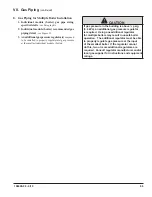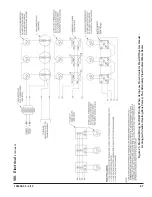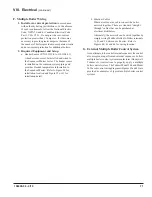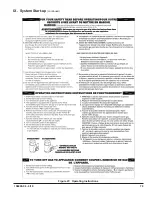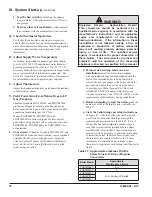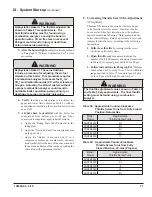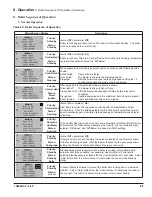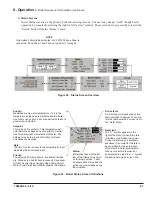
72
106309-03 - 4/19
WARNING
Explosion Hazard. Asphyxiation Hazard.
Electrical Shock Hazard. Start-up of this boiler
should be undertaken only by trained and skilled
personnel from a qualified service agency.
Follow these instructions exactly. Improper
installation adjustment, service or maintenance
can cause property damage, personal injury or
loss of life.
A. Verify that the venting, water piping, gas
piping and electrical system are installed
properly.
Refer to installation instructions contained
in this manual.
B. Confirm all electrical, water and gas
supplies are turned off at the source
and that
vent is clear of obstructions.
C. Confirm that all manual shut-off gas valves
between the boiler and gas source are closed.
D. If not already done,
flush the system
to
remove sediment, flux and traces of boiler additives.
This must be done with the boiler isolated from the
system. Fill entire heating system with water meeting
the following requirements:
NOTICE
pH between 7.5 and 9.5.
If system contains aluminum components, pH
must be less than 8.5
Chlorides< 50 ppm
Total Dissolved Solids - less than 2500 PPM
Hardness - 3 to 9 grains/gallon.
Pressurize the system to at least 14.5 psi (100 kPa).
Purge air from the system. A manual air vent is located
on the right side of the heat exchanger inside the
cabinet.
WARNING
Burn Hazard. The maximum operating pressure
of this boiler is 30 psig (210 kPa), 50 psig
(340 kPa), 60 psig (410 kPa), 80 psig (550 kPa)
or 100 psig (689 kPa) depending on the model
and safety relief valve option selected. Never
exceed the maximum allowable working pressure
on the heat exchanger ASME plate.
IX. System Start-up
E. Confirm that the boiler and system have no
water leaks.
NOTICE
If it is required to perform a long term pressure
test of the hydronic system, the boiler should
first be isolated to avoid a pressure loss due to
the escape of air trapped in the boiler.
To perform a long term pressure test including
the boiler, ALL trapped air must first be removed
from the boiler.
A loss of pressure during such a test, with no
visible water leakage, is an indication that the
boiler contained trapped air.
F. Check all gas piping for leaks
and purge piping
sections that are filled with air. Refer to
National
Fuel Gas Code
, ANSI Z223.1/NFPA 54 or, in Canada,
Natural Gas and Propane Installation Code
, CAN/CSA
B149.1.
DANGER
Explosion Hazard. Do not use matches, candles,
open flames or other ignition source to check for
leaks.
Make sure that the area around the boiler is clear
and free from combustible materials, gasoline
and other flammable vapors and liquids.
G. Confirm vent system is complete
and free of
obstructions before attempting to fire boiler.
H. Inspect all wiring
for loose, uninsulated, or
miswired connections.
I. If boiler is to be converted to LP gas
(propane),
convert as described in Part T of this
section of the manual. Only models PHNTM399C
and PHNTM500C can be converted to LP gas. Models
PHNTM600C, PHNTM700C and PHNTM800C are
factory built for LP gas and cannot be converted.
J. If boiler is operating at elevations above
2000 ft,
see Appendix A for setup instructions.
K. Start the boiler using operating instructions
in Figure 47. After the boiler is powered up with a call
for heat, the boiler should go through the sequence of
operation shown in Table 44.
Summary of Contents for Phantom-X Series
Page 49: ...49 106309 03 4 19 VI Water Piping and Trim continued Figure 28 Near Boiler Piping Heating Only...
Page 63: ...63 106309 03 4 19 VIII Electrical continued Figure 40 Ladder Diagram...
Page 64: ...64 106309 03 4 19 VIII Electrical continued Figure 41 Wiring Connections Diagram 2...
Page 73: ...73 106309 03 4 19 IX System Start up continued Figure 47 Operating Instructions...
Page 124: ...124 106309 03 4 19 XIII Service Parts continued...
Page 130: ...130 106309 03 4 19 XIII Service Parts continued...
Page 133: ...133 106309 03 4 19 XIII Service Parts continued 10A 10B 10C 10D 10G...
Page 139: ...139 106309 03 4 19...


